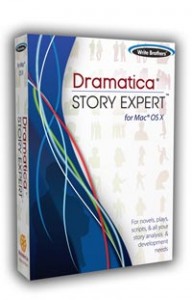Problems
Without a problem, a story is at rest or Neutral. All of the dramatic pieces are balanced and no potential exists. But when a problem is introduced, that equilibrium becomes unbalanced. We call that imbalance an Inequity. An inequity provides the impetus to drive the story forward and causes the Story Mind to start the problem solving process.
Work Stories and Dilemma Stories
It is important to differentiate between solvable and unsolvable problems. The solvable problem is, simply, a problem, whereas an unsolvable problem is called a Dilemma. In stories, as in life, we cannot tell at the beginning whether a problem is solvable or not because we cannot know the future. Only by going through the process of problem solving can we discover if the problem can be solved at all.
If the problem CAN be solved, though the effort may be difficult or dangerous, and in the end we DO succeed by working at it, we have a Work Story. But if the Problem CAN’T be solved, in the case of a Dilemma, once everything possible has been tried and the Problem still remains, we have a Dilemma Story.
Mind and Universe
At the most basic level, all problems are the result of inequities between Mind (ourselves) and Universe (the environment). When Mind and Universe are in balance, they are in Equity and there is neither a problem nor a story. When the Mind and Universe are out of balance, and Inequity exists between them, there is a problem and a story to be told about solving that problem.
Example: Jane wants a new leather jacket that costs $300.00. She does not have $300.00 to buy the jacket. We can see the Inequity by comparing the state of Jane’s Mind (her desire for the new jacket) to the state of the Universe (not having the jacket).
Note that the problem is not caused solely by Jane’s desire for a jacket, nor by the physical situation of not having one, but only because Mind and Universe are unbalanced. In truth, the problem is not with one or the other, but between the two.
There are two ways to remove the Inequity and resolve the problem. If we change Jane’s Mind and remove her desire for the new jacket — no more problem. If we change the Universe and supply Jane with the new jacket by either giving her the jacket or the money to buy it — no more problem. Both solutions balance the Inequity.
Subjective and Objective Views
From an outside or objective point of view, one solution is as good as another. Objectively, it doesn’t matter if Jane changes her Mind or the Universe changes its configuration so long as the inequity is removed.
However, from an inside or subjective point of view, it may matter a great deal to Jane if she has to change her Mind or the Universe around her to remove the Inequity. Therefore, the subjective point of view differs from the objective point of view in that personal biases affect the evaluation of the problem and the solution. Though objectively the solutions have equal weight, subjectively one solution may appear to be better than another.
Stories are useful to us as an audience because they provide both the Subjective view of the problem and the Objective view of the solution that we cannot see in real life. It is this Objective view that shows us important information outside our own limited perspective, providing a sense of the big picture and thereby helping us to learn how to handle similar problems in our own lives.
If the Subjective view is seen as the perspective of the soldier in the trenches, the Objective view would be the perspective of the General watching the engagement from a hill above the field of battle. When we see things Objectively, we are looking at the Characters as various people doing various things. When we are watching the story Subjectively, we actually stand in the shoes of a Character as if the story were happening to us.
A story provides both of these views interwoven throughout its unfolding. This is accomplished by having a cast of Objective Characters, and also special Subjective Characters. The Objective Characters serve as metaphors for specific methods of dealing with problems. The Subjective Characters serve as metaphors for THE specific method of dealing with problems that is crucial to the particular problem of that story.
Subscribe to:
Post Comments (Atom)







No comments:
Post a Comment